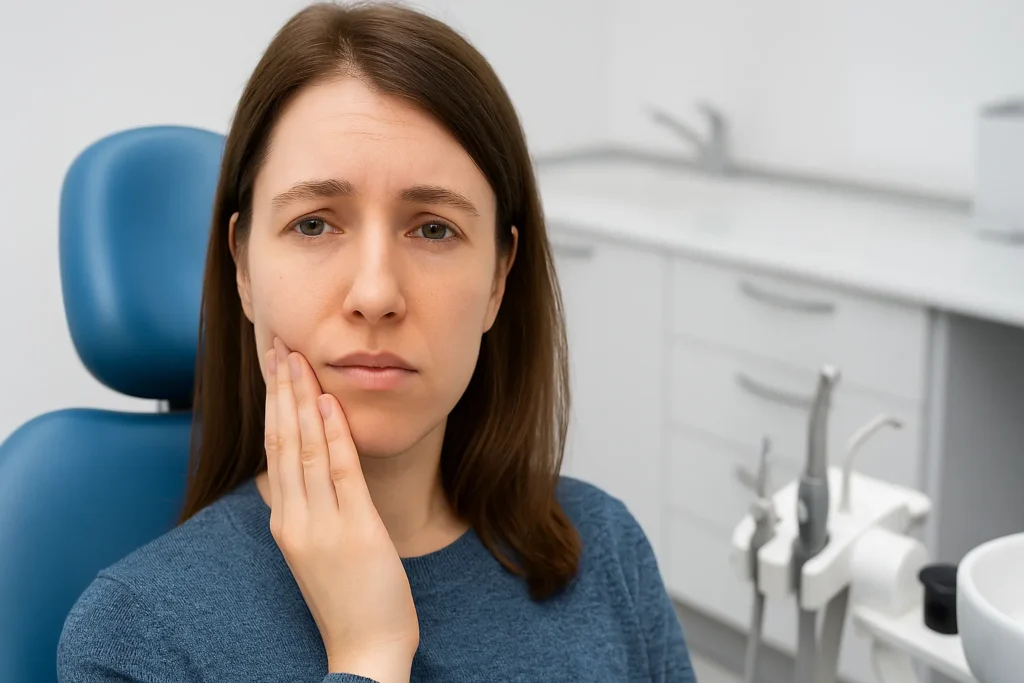If you’ve been told you need a root canal, chances are your first thought is, “How long does a root canal take?” It’s a fair question, and one that makes a big difference when planning your schedule and managing your nerves. Root canals sound intimidating, but they’re actually one of the most effective ways to save a damaged or infected tooth. In this guide, we’ll explore the full timeline: from the moment you sit in the dentist’s chair to the days and weeks of healing afterward. Let’s walk through everything you need to know in simple terms.
How Long Does It Take to Do a Root Canal?
The average root canal procedure takes 30 to 90 minutes, depending on the complexity of the case and which tooth is involved.
Here’s why the time can vary:
- Front teeth (incisors and canines) usually have one root, making them faster to treat, often in 30 to 45 minutes.
- Back teeth (molars) can have three or more roots, which means the dentist may need 90 minutes or more.
- If your infection is severe or there’s a complication (like a curved canal), your dentist may need to split it into two separate visits.
So, if you’re wondering how long does it take to do a root canal, remember: It’s not always a one-size-fits-all answer. But most people are in and out within one to one-and-a-half hours.
If you’re someone who’s exploring other dental topics, you might also want to check how salt keeps dental problems away, a natural and age-old practice that’s still relevant today.
What Happens During the Appointment?
Let’s say you’re walking into your root canal appointment. Here’s how things usually go:
- Numbing the area: Your dentist will apply a local anesthetic so you won’t feel pain, just pressure.
- Accessing the tooth: They’ll make a small opening in the tooth to reach the pulp.
- Cleaning and disinfecting: The infected pulp is removed, and the canal is thoroughly cleaned.
- Filling the canal: The empty canal is filled with a rubber-like material called gutta-percha.
- Sealing the tooth: A temporary or permanent filling is used to seal the opening.
- Optional: A crown: If your tooth needs extra protection, a crown is usually added in a later appointment.
It might sound like a lot, but it’s a pretty routine procedure for a trained endodontist or dentist.
Does It Hurt? What About After the Procedure?
Root canals have a bad reputation, but thanks to modern techniques and anesthesia, most people feel little to no pain during the actual procedure.
However, after the numbing wears off, you might feel:
- Mild soreness or tenderness
- Slight swelling in the area
- Sensitivity when chewing or biting
These symptoms are usually manageable with over-the-counter painkillers and should subside in a few days.
How Long Does a Root Canal Take to Heal?
Now to the next big question: how long does a root canal take to heal?
Typical healing timeline:
- 24–72 hours: Mild discomfort that gradually fades
- 1 week: Most of the soreness should be gone
- 2–4 weeks: Full recovery, especially if you’re getting a crown placed later
Keep in mind, if your tooth required multiple visits or had a complicated infection, healing might take a bit longer. But in most cases, people are back to normal within a few days.
Do’s and Don’ts After a Root Canal
Here are a few things to speed up healing and avoid complications:
Do:
- Stick to soft foods for the first few days
- Use cold compresses if there’s swelling
- Take medications as prescribed
- Keep the area clean but gentle when brushing
Don’t:
- Chew hard or crunchy foods with the treated tooth
- Skip your follow-up appointment
- Ignore lingering pain (if it continues beyond a week, call your dentist)
Did You Know? Root Canals Can Prevent Bigger Issues
When left untreated, an infected tooth can lead to:
- Jawbone damage
- Tooth loss
- Spread of infection to other parts of the body
That’s why a root canal isn’t just about relieving pain, it’s about preserving your oral health long-term.
What If You’re Nervous About the Procedure?
Totally normal. Dental anxiety is real. Here are a few tips:
- Talk to your dentist: A good dentist will explain each step and help calm your nerves
- Ask about sedation options: Some clinics offer nitrous oxide or oral sedatives
- Bring headphones: Listening to music or a podcast can distract you
And just remember, millions of root canals are performed every year, and they’re one of the safest and most common dental procedures out there.
You may also enjoy reading about how to reduce gap between teeth naturally at home, especially if you’re looking for dental care tips that don’t involve procedures.
Cost and Alternatives: What You Should Know
A common follow-up thought to “how long does a root canal take” is “how much will it cost?” In the USA, root canal costs typically range from $700 to $1,500 depending on the tooth, dentist, and location. Molars cost more due to their complexity. If you’re considering alternatives, veneers might come up, especially if you’re more focused on cosmetic fixes. In that case, you may want to explore how much are veneers to compare both the cost and purpose.
Final Thoughts
A root canal typically takes 30 to 90 minutes and helps save your natural tooth with minimal discomfort. Recovery is quick if you follow proper aftercare and complete the treatment as advised. It might sound scary, but it’s a safe, effective fix for serious dental issues. And if you’re ever curious about health, wellness, or everyday questions, NutBolt India is here to guide you with simple, clear answers.
Other Common Questions People Ask
How long does a root canal take for molars?
Molars typically take 60 to 90 minutes, and sometimes a second visit may be needed depending on the root structure.
Can I go to work after a root canal?
Yes, most people return to work the same day. But if you’re feeling drowsy from medication or uncomfortable, it’s okay to rest.
Do I always need a crown after a root canal?
Not always. Front teeth may do fine with just a filling, but back teeth usually need crowns because of the pressure they face while chewing.













